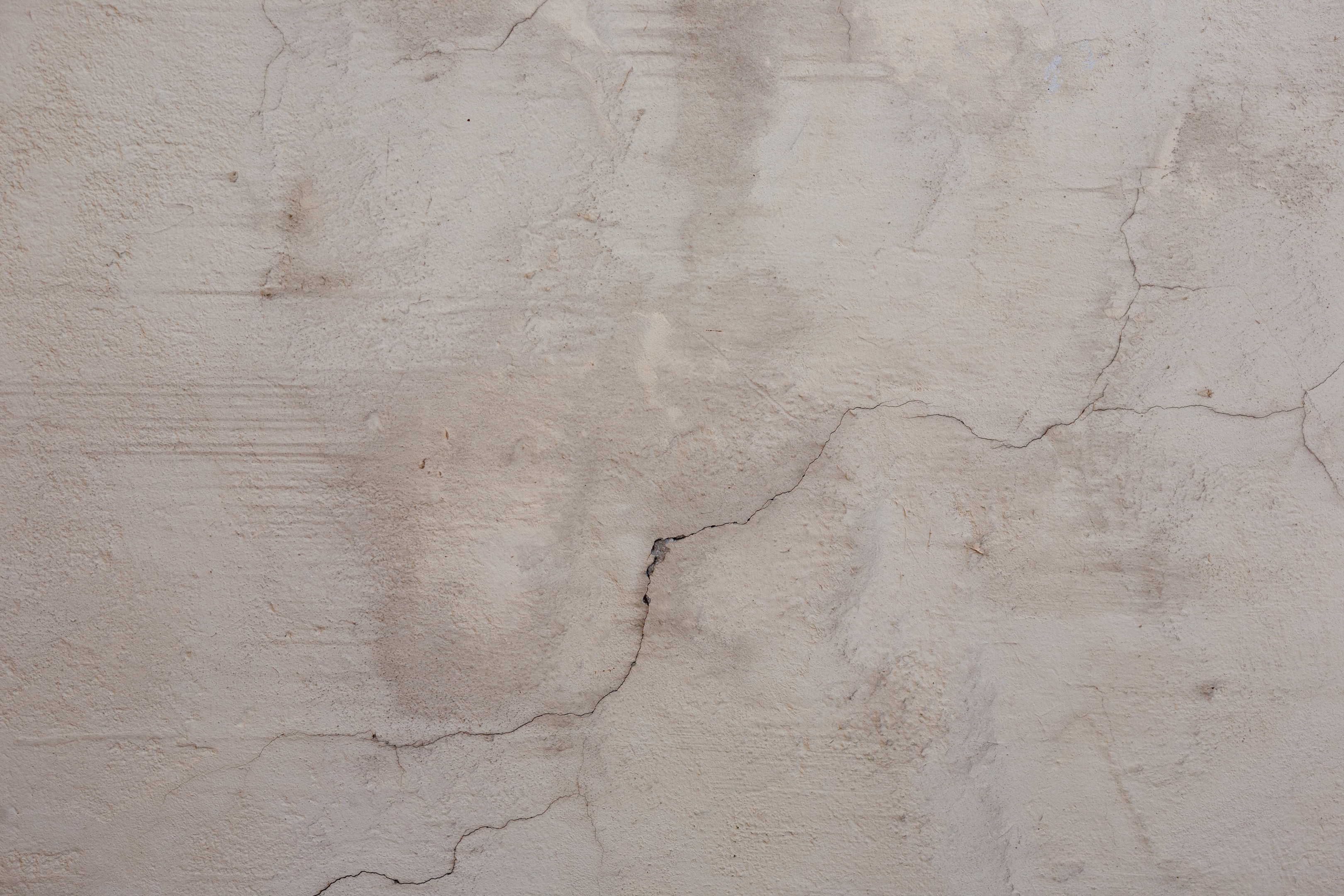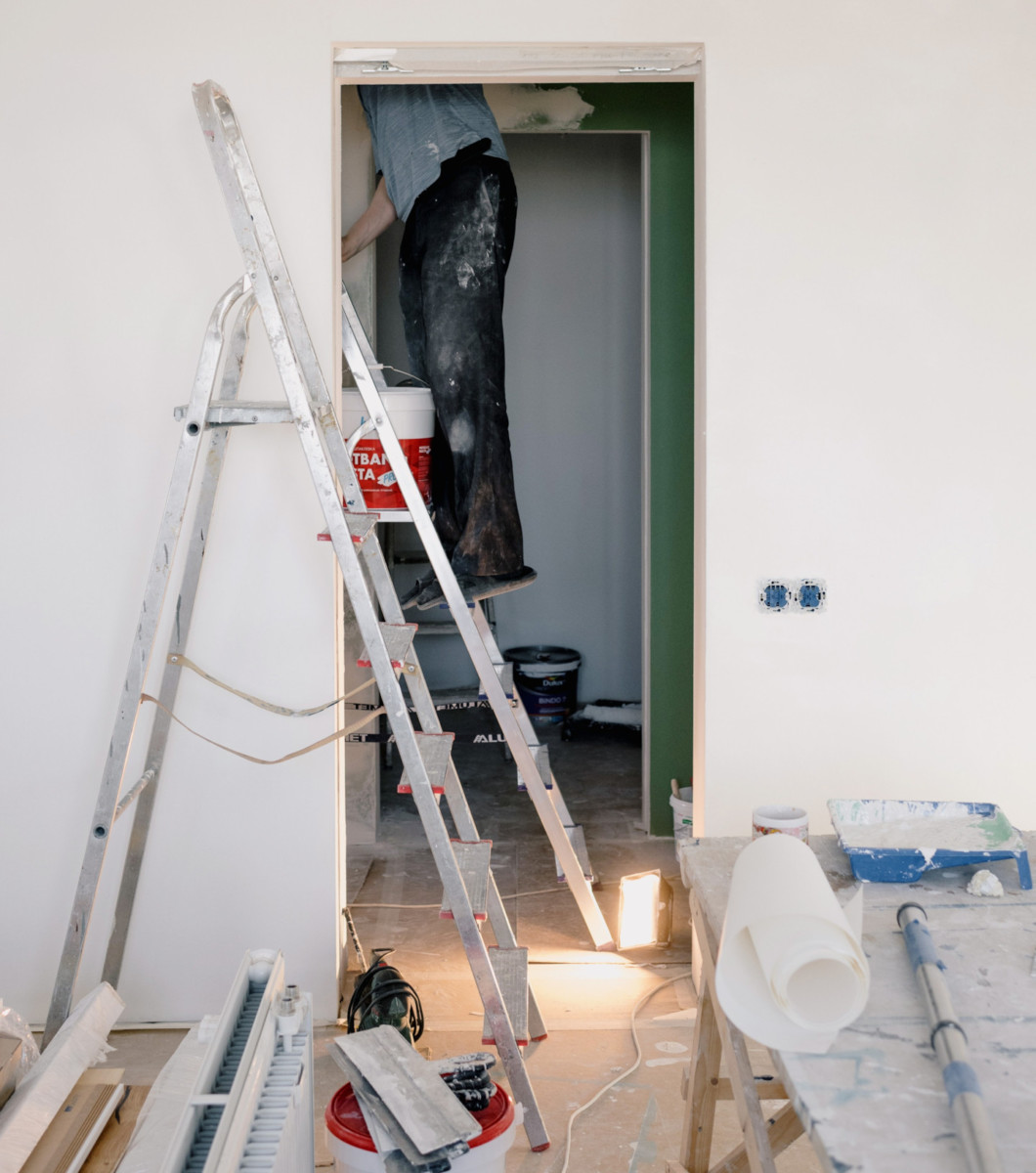A drip coming from your ceiling will catch anyone’s attention right away. You may be going about your day when that unmistakable sound of water droplets hitting your floor rings out. You look up to notice your kitchen vent or light fixture is slowly pooling water and then steadily pattering down to your floor.
Dealing with ceiling leaks in your apartment isn’t easy. It can be even harder to figure out where the source of the problem is coming from. Whether it’s coming from your upstairs neighbor’s apartment, a leaking pipe inside the building, or maybe residual water damage after a stormy night, this isn’t something you shouldn’t fix by yourself. As a renter, it’s good to know the scenarios that may cause ceiling leaks and, most importantly, who is responsible for repairing them.

What causes apartment ceiling leaks?
There are numerous reasons and sources for ceiling leaks in an apartment. Water damage can come from malfunctioning appliances, broken pipes, overflowing tub in your apartment or from your neighbor upstairs, dishwashers, and clogged toilets, just to name a few. Any of these scenarios may cause leaks, damaging your belongings and may result further in mold growth if not properly dealt with. Here are more potential origins of water issues in your apartment.
Possible reasons for a leaking ceiling
A leaky ceiling is an unhealthy situation that needs immediate attention. Whether you are dealing with faulty appliances yourself or your upstairs neighbor, here are the common household appliances you should look at immediately if you’re experiencing a leak:
- Leaky refrigerator water lines
- Broken dishwasher or disposal
- Overflowing sinks or bathtub
- Clogged and backed-up toilets
- Leaking washers
Damage can sometimes come as a result of a building-wide plumbing issue, often stemming from gaskets, caulking, pipes or older materials failing to contain the water leading to a leak. These scenarios would typically include:
- Pipes bursting from freezing temperatures
- Leaking air conditioning lines
- Broken fire sprinkler pipes
- Leaks in the water heating systems
- General plumbing problems
Some of the most common cases of leaky ceilings are due to natural weather causes. If you are experiencing leaking during a storm or heavy rain it’s important to mitigate the situation as soon as possible. A leaking attic or roof can channel water anywhere, following along beams and rafters to eventually exit through your ceiling. In these cases, if you happen to live in a storm-risk area, or you’re renting an apartment in a basement, it might be safe to get a flood insurance policy separate from your basic renters insurance before you move in. If a natural disaster occurs, your belongings will be protected.
Signs of ceiling leaks to watch out for
- Discoloration: At the beginning of a leak, dark-colored stains in the form of rings and spots may appear on your ceiling even if they happen to be dry to the touch.
- Peeling paint: If the water is heavily invading a certain area of the ceiling, especially for a long period of time, moisture will result in paint flaking or peeling.
- Sagging: Water will eventually accumulate over prolonged periods of time if untreated. The weight of the water will cause the ceiling to sag. If the necessary repairs are not made as soon as possible, this can cause severe property damage.

Who is responsible for the ceiling leak
It’s important to know your renter’s rights since water damage is highly unpredictable. Review your lease agreement, there should be a section that touches on the topic of water damage, flooding, or leaks so you know who is responsible for the repairs according to your lease terms.
The tenant’s responsibility
Anything that belongs to you as the tenant is your responsibility. If you are responsible for the purchase and ownership of a washing machine and it happens to leak, causing water damage to the property, the landlord is not responsible for making the repairs to the washing machine, and may not be responsible for property damage either. Therefore, you or your renter’s insurance company would be financially responsible for making such repairs. This also includes ceiling leaks and water damage as a result of the tenant’s neglect of the property or failure to notify property management. Furthermore, if a ceiling leak is detected, tenants must move their personal belongings away from the affected area. Your personal property is your responsibility. Landlords are not usually responsible for replacing or repairing damage to a tenant’s personal property.
The property manager or landlord’s responsibility
If a ceiling leak is not due to negligence then property management is likely responsible for fixing the issue. For example, if a busted pipe is leaking through your ceiling and damages your hardwood flooring, the property manager or landlord should replace structural damages so that your space is livable. If the landlord fails to maintain the property, the tenant might be able to withhold rent until the property is livable.
If your landlord does not fix the problem, you can take further steps in notifying your city clerk or county health department to see who can inspect and enforce housing codes. You can also seek the advice of a landlord/tenant attorney or tenants rights organization in your area.
The neighbor
Perhaps your upstairs neighbor forgets to turn off their bathwater, causing a major leak in your ceiling. Negligence on behalf of the upstairs tenant causes damage to your carpet and your furniture. Your renters insurance will likely cover the costs of your personal belongings, but damage to the apartment unit and its cost to repair it will have to be settled between the upstairs neighbor and your landlord.
Renters Insurance
Renters insurance policies often cover costs to replace your damaged belongings. The damage to the structure of your building will not be covered through your renters insurance, rather, your property manager or landlord will most likely have an insurance of their own that will cover those damages. Review your renters insurance policy to see what is covered and not covered. For instance, if a ceiling leak ruins your furniture in your bedroom, see how much of your renters insurance will cover the replacement costs.

How to fix a ceiling leak in an apartment in 5 steps
If you see drywall swelling, brown rings forming, or paint bubbling in your ceiling, then you know you have a ceiling leak and you need to fix the problem right away.
- Determine the location of the leak. Dining room and living room leaks are a much different location than kitchen and bathroom leaks. Note if your leak is confined in one specific area or is spread across a larger part of the ceiling. Consider taking photos of your leak and identifying how serious the leak is to the best of your knowledge. A discolored ceiling and warped ceiling mean the leak has existed for a while and should be stopped immediately.
- Identify who is responsible for the damages and repairs. Review your lease in detail to identify who is responsible for what repairs. Whether it is your fault, your upstairs neighbors, or the property itself, the damage has to be repaired either way. If you live on the top floor of your apartment building, this could be simply due to structural issues. If you live on a middle floor with tenants above you, you could be dealing with a leak due to a neighbor’s accident. Do check with your upstairs neighbors in case they don’t realize they have a water leak somewhere in their apartment.
- Get something to contain the water right away if you notice dripping. Move your belongings out of the water’s path if you can. Consider even covering your belongings and furniture with a waterproof cover. Vinyl shower curtains and tablecloths are excellent water repellents. You should notify your renters insurance company if any of your belongings are damaged.
- Soak up the water from the floor. If you don’t remove water from the floor fast enough, the flooring can warp or develop a mildew problem. You can use towels or a wet and dry vacuum to suck up pooling water.
- Contact your property management or landlord and notify them of the damage. Your owner will need to make sure that the essential plumbing and property are adequately fixed and functioning properly. Do know your landlord is responsible for hiring a restoration company to take care of the damage that is due to underlining issues with the property.
No matter what it’s better to be safe than sorry. Prepare yourself for the worst when it comes to discovering water damage in your home. Always notify your landlord right away and review your lease agreement so you understand your tenant rights.
Redfin does not provide legal advice. This article is for informational purposes only, and is not a substitute for professional advice from a licensed attorney.
The post How to Handle a Ceiling Leak in Your Apartment appeared first on Redfin | Real Estate Tips for Home Buying, Selling & More.
